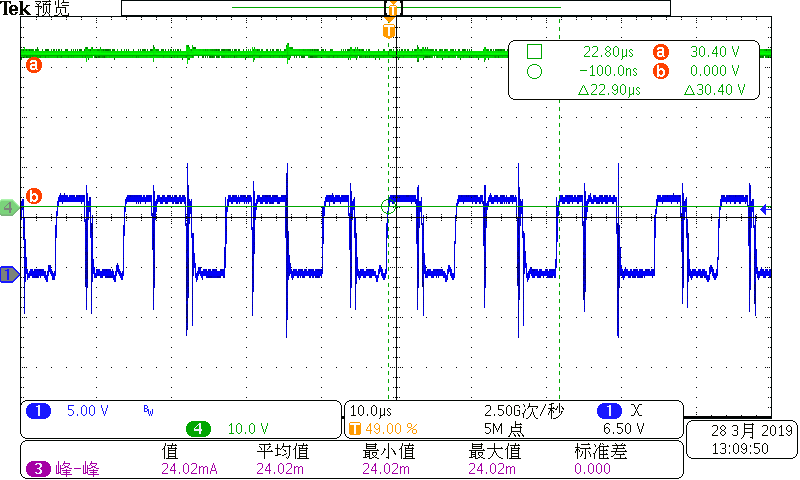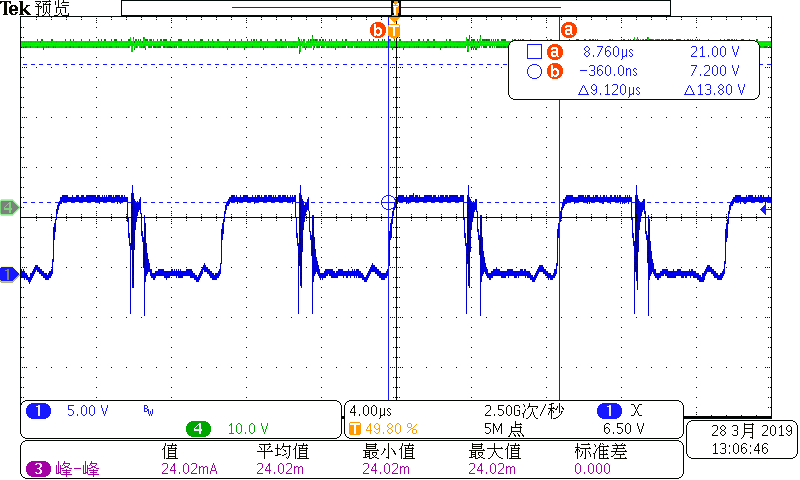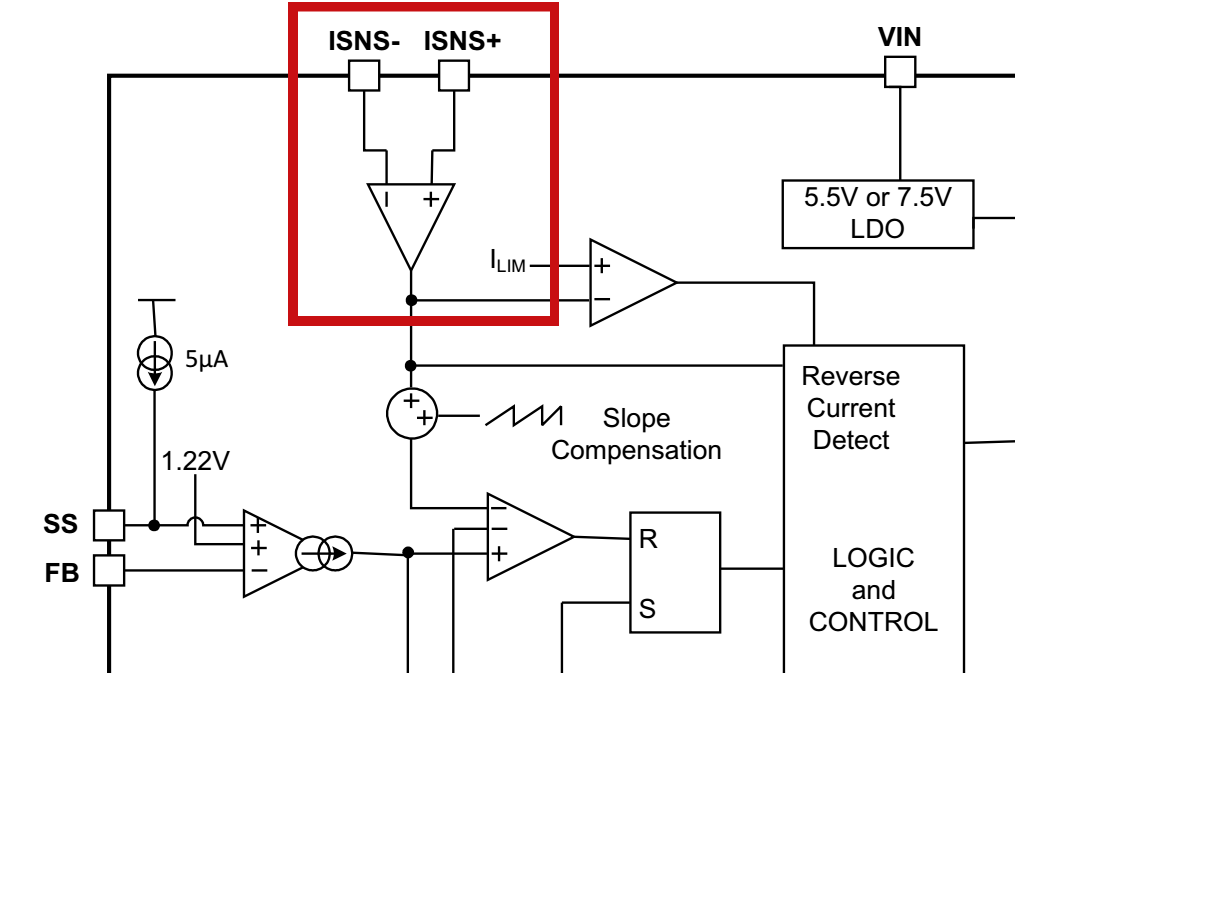Other Parts Discussed in Thread: LM5122
Hi teams
My customer is using TPS43060 for new design and encounters some issue.
Customer design requirements is 12V-30V 10A output.
The issue phenomenon:
- They connect a 470Kohm resistor in RT pin to set the switching frequency to 122Khz but the actual switching frequency only the 1/2 of calculation. Are the formula in data sheet is correct or wrong?
- I wondering to know the gain of the current sensing resistor amplifier. Datasheet didn't give this parameter.
- The switching frequency becomes unstable when in higher load (2A). And the gate drive signal is also abnormal.
- What waveform we should seeing in RT pin when its normal? (If you can capture a picture is the best)
- Do our boot cap have UVLO protection? What's the threshold and machanism?
The and abnormal wavefrom is shown below:
The schematic parameter:




